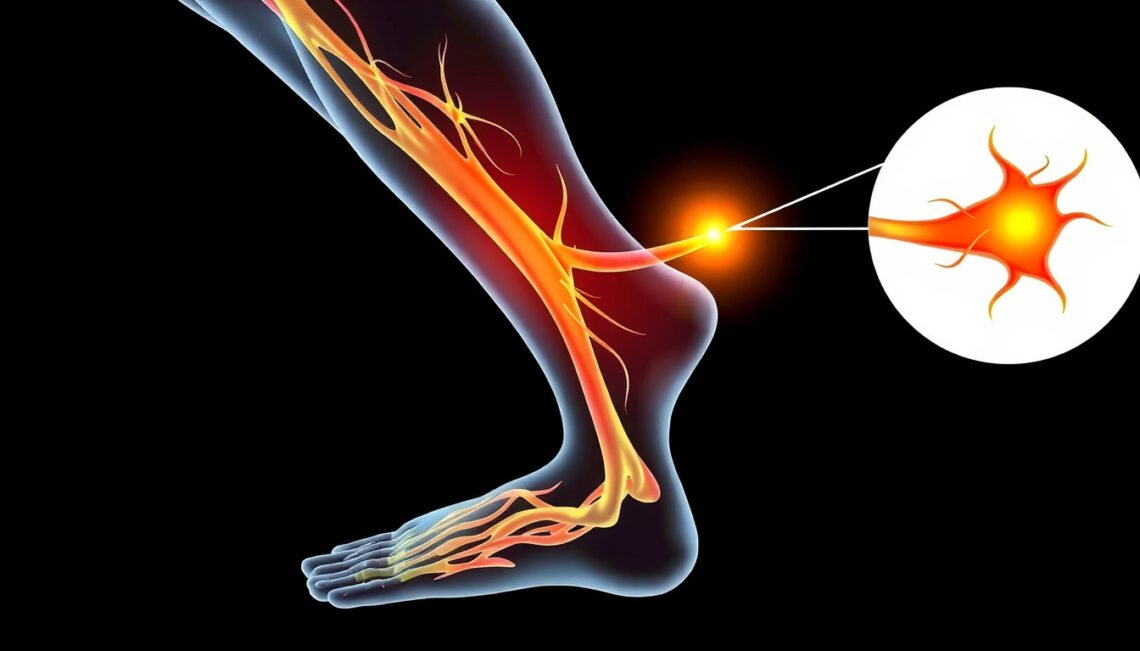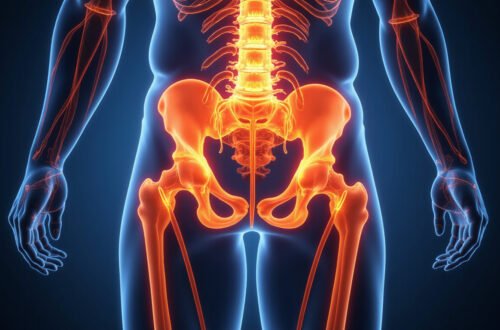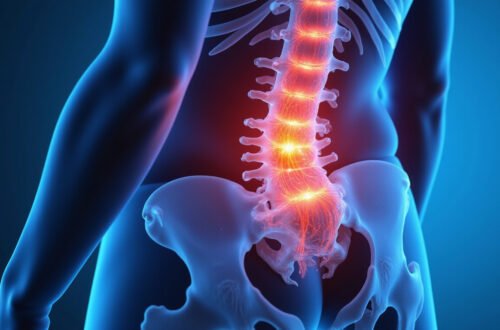Sciatic neuropathy is a condition that affects the sciatic nerve, leading to persistent pain, numbness, or weakness along the path of this crucial nerve. Understanding sciatic neuropathy’s causes, symptoms, and treatment options is essential for anyone experiencing related discomfort to find relief and improve quality of life. This article delves deep into the factors contributing to sciatic neuropathy, identifies common symptoms, and provides an overview of effective treatments.
What Is Sciatic Neuropathy?
Sciatic neuropathy refers to the damage or dysfunction of the sciatic nerve, the longest and widest nerve in the human body. Originating from the lower spine, the sciatic nerve runs down each leg, controlling muscles in the thigh, leg, and foot and providing sensation to much of the lower limb. When this nerve becomes compressed, injured, or inflamed, it can lead to sciatic neuropathy, resulting in neuropathic pain and motor deficits.
Importantly, sciatic neuropathy should not be confused with sciatica, which is a broader term describing pain caused by irritation of the sciatic nerve, often due to nerve root compression. Sciatic neuropathy specifically pertains to disorders affecting the nerve itself.
Causes of Sciatic Neuropathy
Understanding what causes sciatic neuropathy can help in early identification and management. The most common causes include:
-
Lumbar Disc Herniation: A herniated disc in the lower spine can compress the sciatic nerve roots, disrupting nerve transmission.
-
Direct Sciatic Nerve Injury: Trauma resulting from accidents, surgeries, or deep injections can physically damage the sciatic nerve.
-
Piriformis Syndrome: The piriformis muscle, located in the buttock region, can spasm or tighten, compressing the sciatic nerve.
-
Tumors or Cysts: Growths along the nerve pathway may exert pressure on the sciatic nerve.
-
Diabetic Neuropathy: Diabetes can cause peripheral nerve damage, sometimes affecting the sciatic nerve.
-
Infections: Infections like herpes zoster can lead to inflammation and nerve damage.
-
Prolonged Pressure or Poor Posture: Sitting for extended periods, especially on hard surfaces or with poor posture, may irritate the sciatic nerve over time.
Recognizing the Symptoms of Sciatic Neuropathy
Symptoms of sciatic neuropathy vary depending on the severity and specific cause of nerve damage but generally include:
-
Radiating Pain: Persistent sharp, burning, or stabbing pain that begins in the lower back or buttock and travels down the leg.
-
Numbness and Tingling: A pins-and-needles sensation or loss of sensation may appear along the nerve’s distribution.
-
Muscle Weakness: Difficulty moving the leg or foot, such as foot drop (inability to lift the front part of the foot).
-
Reduced Reflexes: Decreased Achilles tendon reflex due to nerve impairment.
-
Coldness or Sensitivity: Altered temperature sensation or hypersensitivity to touch.
It is important to note that symptoms typically affect one leg. If both legs are involved, this may indicate a different underlying condition requiring medical evaluation.
Diagnosing Sciatic Neuropathy
A thorough evaluation is necessary to confirm the diagnosis of sciatic neuropathy and to rule out other conditions such as spinal stenosis or vascular disease.
-
Clinical Examination: Doctors assess reflexes, muscle strength, and sensory tests to localize nerve involvement.
-
Electromyography (EMG) and Nerve Conduction Studies (NCS): These tests evaluate electrical activity in muscles and the speed of nerve signals, helping quantify nerve damage.
-
Imaging Tests: MRI or CT scans can reveal structural abnormalities, such as herniated discs or tumors compressing the nerve.
-
Blood Tests: To identify systemic causes like diabetes or infections.
Effective Treatment Options for Sciatic Neuropathy
The treatment of sciatic neuropathy depends on the underlying cause, severity, and duration of symptoms. A combination of medical, physical, and sometimes surgical interventions may be necessary.
1. Conservative Treatments
Most patients respond well to nonsurgical approaches:
-
Medications:
- Nonsteroidal Anti-Inflammatory Drugs (NSAIDs) reduce pain and inflammation.
- Neuropathic pain agents like gabapentin or pregabalin can ease nerve-related pain.
- Muscle relaxants relieve piriformis muscle spasms.
-
Physical Therapy:
Targeted stretches and strengthening exercises can alleviate pressure on the sciatic nerve. Physical therapy also improves posture and flexibility, minimizing recurrent episodes. -
Heat and Cold Therapy:
Alternating heat and cold packs may reduce inflammation and numb pain. -
Lifestyle Modifications:
Avoiding prolonged sitting, maintaining a healthy weight, and adopting proper ergonomic practices reduce nerve irritation.
2. Minimally Invasive Procedures
For persistent or severe symptoms:
-
Nerve Blocks and Steroid Injections:
Injecting corticosteroids near the sciatic nerve can quickly reduce inflammation and pain. -
Transcutaneous Electrical Nerve Stimulation (TENS):
This therapy uses low-voltage electrical currents to disrupt pain signals and promote healing.
3. Surgical Interventions
Surgery is considered when conservative treatments fail or when irreversible nerve compression is evident:
-
Discectomy: Removing part of a herniated disc pressing on the nerve.
-
Piriformis Muscle Release: In cases of piriformis syndrome unresponsive to therapy.
-
Tumor Removal: Excision of tumors compressing the nerve.
It is crucial to discuss surgical risks and expected outcomes with a qualified specialist.
Preventing Sciatic Neuropathy: Tips for Nerve Health
Preventative measures can significantly reduce the risk of developing sciatic neuropathy:
-
Maintain regular exercise focusing on strengthening core and lower back muscles.
-
Use proper lifting techniques to avoid sudden strain.
-
Practice good posture during sitting, standing, and sleeping.
-
Manage chronic conditions such as diabetes effectively.
-
Take breaks to move and stretch during prolonged periods of sitting.
Frequently Asked Questions (FAQ)
Q1: What differentiates sciatic neuropathy from typical sciatica?
Answer: Sciatic neuropathy specifically refers to damage or dysfunction of the sciatic nerve itself, often confirmed by nerve conduction studies. Sciatica is a broader term that describes pain caused by irritation or compression near the nerve roots, usually from a herniated disc.
Q2: Can sciatic neuropathy heal on its own without treatment?
Answer: Mild cases of sciatic neuropathy may improve with rest, physical therapy, and lifestyle changes. However, untreated or severe nerve damage can worsen and cause long-term complications, so consulting a healthcare provider is advised.
Q3: What are reliable home remedies for managing sciatic neuropathy pain?
Answer: Home remedies include applying heat or cold packs, gentle stretching exercises, over-the-counter NSAIDs for pain relief, and avoiding prolonged sitting or standing. However, these should complement professional medical care.
Conclusion
Sciatic neuropathy can significantly impair mobility and quality of life, but with timely diagnosis and a comprehensive approach to treatment, most individuals can experience considerable relief. Recognizing the signs early and identifying the underlying causes is key to effective management. If you are suffering from symptoms such as radiating leg pain, numbness, or weakness, do not delay seeking professional evaluation. Remember, your nerve health is paramount—take proactive steps today towards recovery and well-being.

For those looking for expert advice or more information about sciatic neuropathy, consulting a neurologist or orthopedic specialist is the best course of action. With medical advancements and tailored therapies available, you can overcome the challenges of sciatic neuropathy and reclaim your active lifestyle.
Reference: For an in-depth medical overview on sciatic nerve conditions, visit the Mayo Clinic’s resource on sciatica (https://www.mayoclinic.org/diseases-conditions/sciatica/symptoms-causes/syc-20377435).






